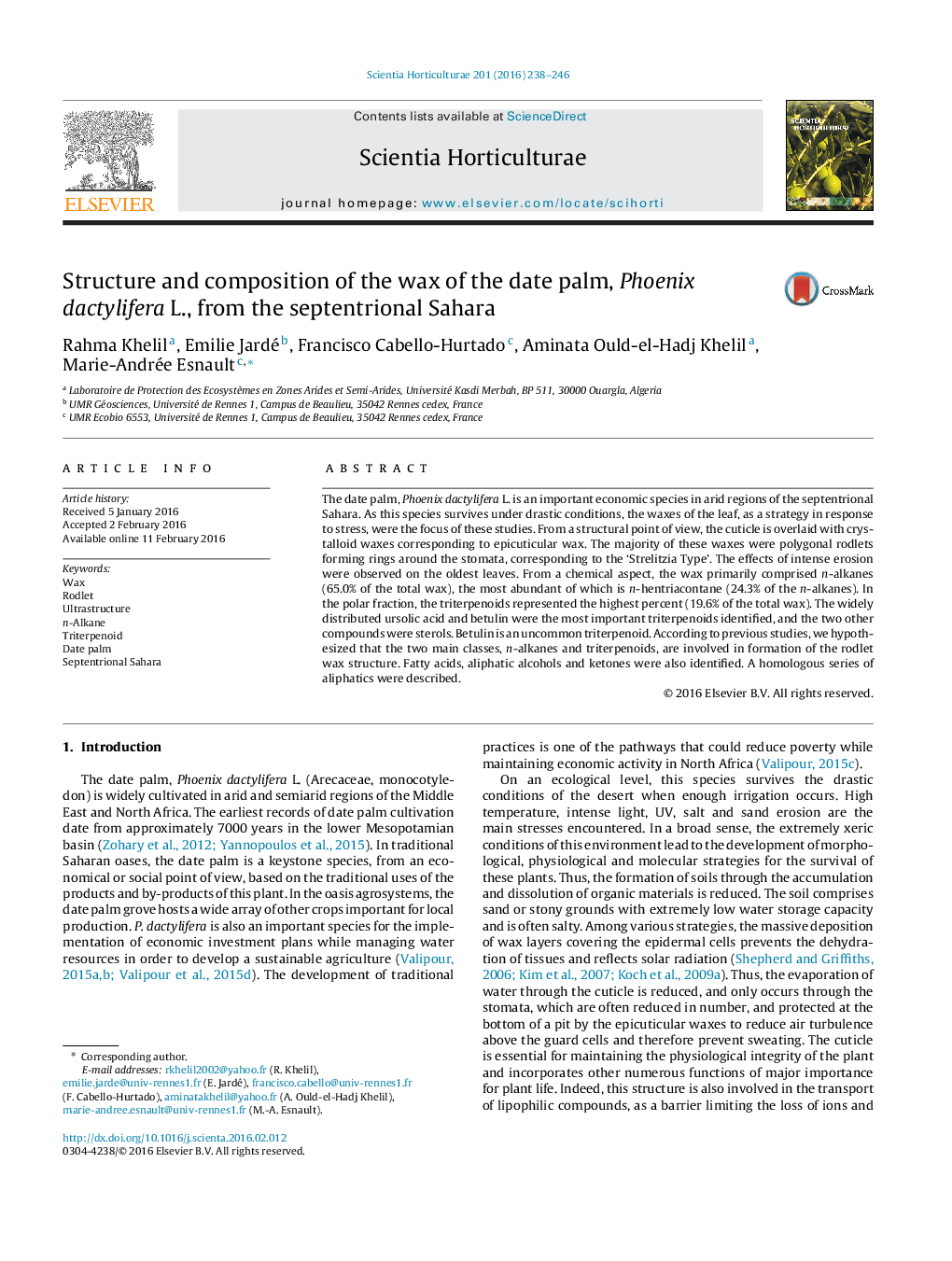| Article ID | Journal | Published Year | Pages | File Type |
|---|---|---|---|---|
| 6406409 | Scientia Horticulturae | 2016 | 9 Pages |
The date palm, Phoenix dactylifera L. is an important economic species in arid regions of the septentrional Sahara. As this species survives under drastic conditions, the waxes of the leaf, as a strategy in response to stress, were the focus of these studies. From a structural point of view, the cuticle is overlaid with crystalloid waxes corresponding to epicuticular wax. The majority of these waxes were polygonal rodlets forming rings around the stomata, corresponding to the 'Strelitzia Type'. The effects of intense erosion were observed on the oldest leaves. From a chemical aspect, the wax primarily comprised n-alkanes (65.0% of the total wax), the most abundant of which is n-hentriacontane (24.3% of the n-alkanes). In the polar fraction, the triterpenoids represented the highest percent (19.6% of the total wax). The widely distributed ursolic acid and betulin were the most important triterpenoids identified, and the two other compounds were sterols. Betulin is an uncommon triterpenoid. According to previous studies, we hypothesized that the two main classes, n-alkanes and triterpenoids, are involved in formation of the rodlet wax structure. Fatty acids, aliphatic alcohols and ketones were also identified. A homologous series of aliphatics were described.
Graphical abstractDownload full-size image
